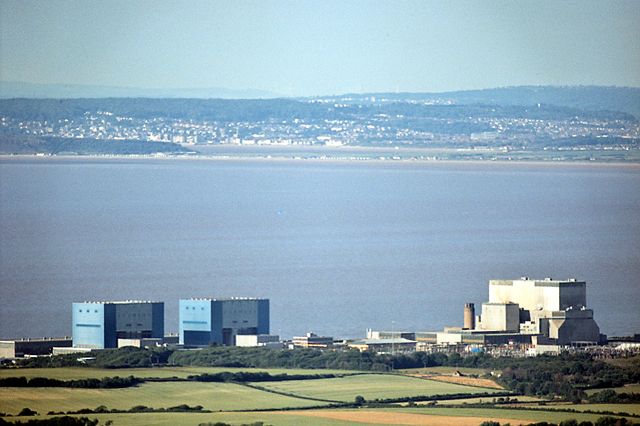 The UK government has finally given the go-ahead to build the new Hinkley C nuclear power station in Somerset. It will consist of two European pressurised reactors, a relatively new technology. No EPR plant has yet been completed, with the one in the most advanced stages of construction at Flamanville in France, having experienced many safety and construction problems. This is currently expected to be more than three times over budget and at least six years behind its original completion date of 2012.
The UK government has finally given the go-ahead to build the new Hinkley C nuclear power station in Somerset. It will consist of two European pressurised reactors, a relatively new technology. No EPR plant has yet been completed, with the one in the most advanced stages of construction at Flamanville in France, having experienced many safety and construction problems. This is currently expected to be more than three times over budget and at least six years behind its original completion date of 2012.
The Hinkley C power station, first proposed in 2007, is currently estimated to cost £18 billion. This cost will be borne entirely by its builder, EDF, the French 85% state-owned company, and its Chinese partner, CGN. When up and running – currently estimated at 2025 – it is expected to produce around 7% of the UK’s electricity output.
On becoming Prime Minister in July 2016, Theresa May announced that the approval for the plant would be put on hold while further investigation of its costs, benefits, 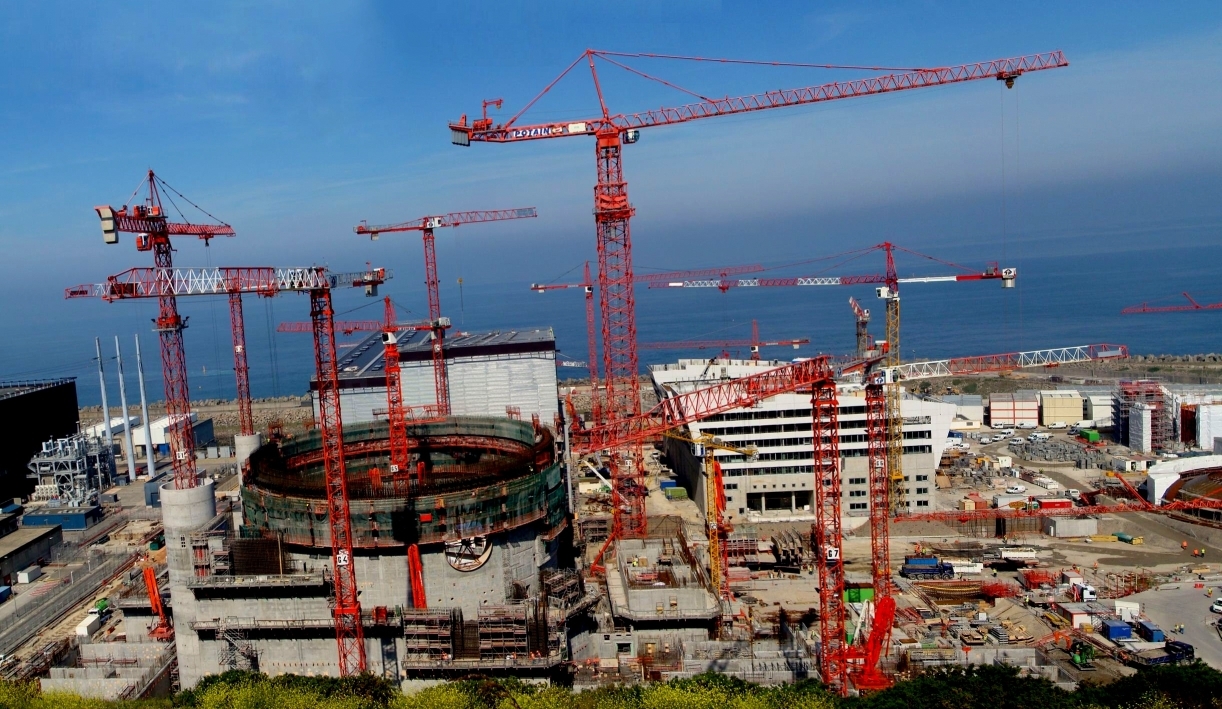 security concerns, technological issues and safeguards was conducted. This has now been completed and approval has been granted subject to new conditions. The main one is that the government “will be able to prevent the sale of EDF’s controlling stake prior to the completion of construction”. This will allow the government to prevent change of ownership during the construction phase. Thus, for example, EDF, would not be allowed to sell its share of Hinkley C to CGN, which currently has a one-third share in the project. EDF and CGN have accepted the new terms.
security concerns, technological issues and safeguards was conducted. This has now been completed and approval has been granted subject to new conditions. The main one is that the government “will be able to prevent the sale of EDF’s controlling stake prior to the completion of construction”. This will allow the government to prevent change of ownership during the construction phase. Thus, for example, EDF, would not be allowed to sell its share of Hinkley C to CGN, which currently has a one-third share in the project. EDF and CGN have accepted the new terms.
After Hinkley the government will have a ‘golden share’ in all future nuclear projects. “This will ensure that significant stakes cannot be sold without the Government’s knowledge or consent.”
In return for their full financing of the project, the government has guaranteed EDF and CGN a price of £92.50 per megawatt hour of electricity (in 2012 prices). This price will be borne by consumers. It will rise with inflation from now and over the first 35 years of the power station’s operation. It is expected that the Hinkley C will have a life of 60 years.
Critics point out that this guaranteed ‘strike price’ is more than double the current wholesale price of electricity and, with the price of renewables falling as technology improves, it will be an expensive way to meet the UK’s electricity needs and cut carbon emissions.
Those in favour argue that it is impossible to predict electricity prices into the distant future and that the certainty this plant will give is worth the high price by current standards.
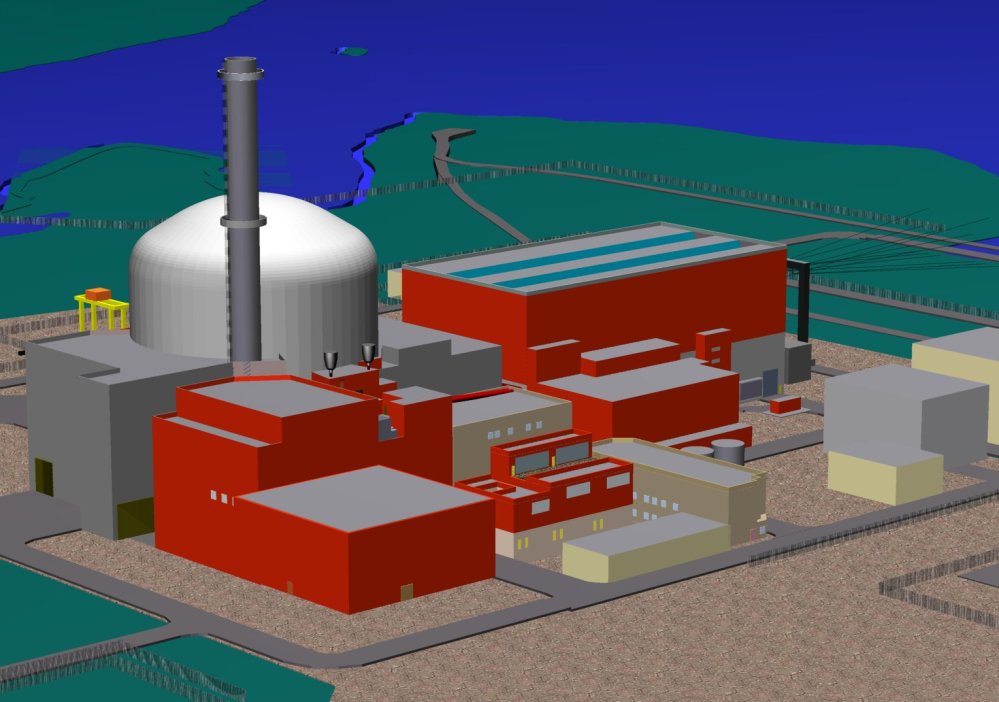
To assess the desirability of the plant requires an assessment of its costs and benefits. In principle, this is a relatively simple process of identifying and measuring the costs and benefits, including external costs and benefits; discounting future costs and benefits to give them a present value; weighting them by their probability of occurrence; then calculating whether the net present value is positive or negative. A sensitivity analysis could also be conducted to show just how sensitive the net present value would be to changes in the value of specific costs or benefits.
In practice the process is far from simple – largely because of the huge uncertainty over specific costs and benefits. These include future wholesale electricity prices, unforeseen problems in construction and operation, and a range of political issues, such as pressure from various interest groups, and attitudes and actions of EDF and CGN and their respective governments, which will affect not only Hinkley C but other future power stations.
The articles look at the costs and benefits of this, the most expensive construction project ever in the UK, and possibly on Earth..
Articles
Hinkley Point: UK approves nuclear plant deal BBC News (15/9/16)
Hinkley Point: What is it and why is it important? BBC News, John Moylan (15/9/16)
 ‘The case hasn’t changed’ for Hinkley Point C BBC Today Programme, Malcolm Grimston (29/7/16)
‘The case hasn’t changed’ for Hinkley Point C BBC Today Programme, Malcolm Grimston (29/7/16)
U.K. Approves EDF’s £18 Billion Hinkley Point Nuclear Project Bloomberg, Francois De Beaupuy (14/9/16)
Hinkley Point C nuclear power station gets government green light The Guardian, Rowena Mason and Simon Goodley (15/9/16)
Hinkley Point C: now for a deep rethink on the nuclear adventure? The Guardian, Nils Pratley (15/9/16)
Hinkley Point C finally gets green light as Government approves nuclear deal with EDF and China The Telegraph, Emily Gosden (15/9/16)
UK gives go-ahead for ‘revised’ £18bn Hinkley Point plant Financial Times, Andrew Ward, Jim Pickard and Michael Stothard (15/9/16)
Hinkley Point: Is the UK getting a good deal? Financial Times, Andrew Ward (15/9/16)
Hinkley Point is risk for overstretched EDF, warn critics Financial Times, Michael Stothard (15/9/16)
Hinkley C must be the first of many new nuclear plants The Conversation, Simon Hogg (16/9/16)
Report
Nuclear power in the UK National Audit Office, Sir Amyas Morse, Comptroller and Auditor General (12/7/16)
Questions
- Summarise the arguments for going ahead with Hinkley C.
- Summarise the objections to Hinkley C.
- What categories of uncertain costs and uncertain benefits are there for the project?
- Is the project in EDF’s interests?
- How will the government’s golden share system operate?
- How should the discount rate be chosen for discounting future costs and benefits from a project such as Hinkley C?
- What factors will determine the wholesale price of electricity over the coming years? In real terms, do you think it is likely to rise or fall? Explain.
- If nuclear power has high fixed costs and low marginal costs, how does this affect how much nuclear power stations should be used in a situation of daily and seasonal fluctuations in demand?
- How could ‘smart grid’ technology smooth out peaks and troughs in electricity supply and demand? How does this affect the relative arguments about nuclear power versus renewables?
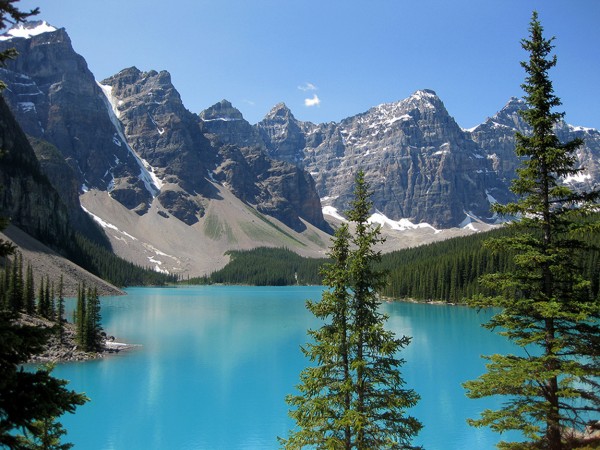 In market capitalism, the stock of manufactured capital provides a flow of output. The profitability of the use of that capital depends on the cost of investing in that capital and the cost of using it, and on the flow of revenues from that capital. Discounted cash flow techniques can be used to assess the profitability of a given investment in capital; the flows of costs and revenues are discounted at a market discount rate to give a net present value (NPV). If the NPV is positive (discounted revenues exceed discounted costs), the investment is profitable; if it is negative, the investment is unprofitable. (See Economics, 8th edition, section 9.3.)
In market capitalism, the stock of manufactured capital provides a flow of output. The profitability of the use of that capital depends on the cost of investing in that capital and the cost of using it, and on the flow of revenues from that capital. Discounted cash flow techniques can be used to assess the profitability of a given investment in capital; the flows of costs and revenues are discounted at a market discount rate to give a net present value (NPV). If the NPV is positive (discounted revenues exceed discounted costs), the investment is profitable; if it is negative, the investment is unprofitable. (See Economics, 8th edition, section 9.3.)
There may be market imperfections in the allocation of investment, in terms of distorted prices and interest rates. These may be the result of market power, asymmetry of information, etc., but in many cases the market allows capital investment to be allocated relatively efficiently.
Natural capital
This is not the case with ‘natural capital’. Natural capital (see also) is the stock of natural resources and ecosystems that, like manufactured capital, yields a flow of goods and services into the future. 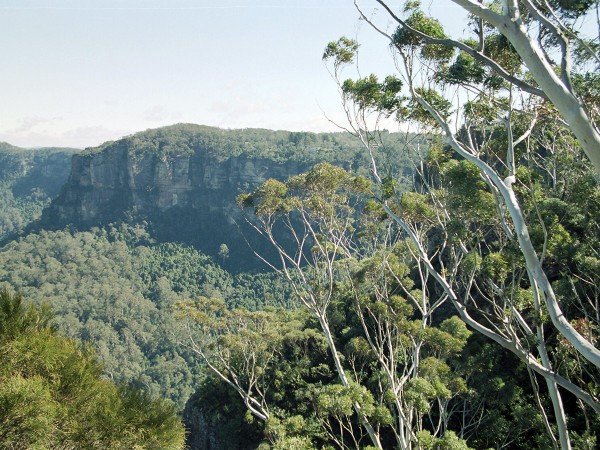 Natural capital, whilst it can be improved or degraded by human action, is available without investment. Thus the natural capital of the oceans yields fish, the natural capital of the skies yields rain and the natural capital of forests reduces atmospheric CO2.
Natural capital, whilst it can be improved or degraded by human action, is available without investment. Thus the natural capital of the oceans yields fish, the natural capital of the skies yields rain and the natural capital of forests reduces atmospheric CO2.
Even though some natural capital is owned (e.g. private land), much is a common resource. As such, it is free to use and tends to get overused. This is the Tragedy of the Commons – see, for example, the following news items: A modern tragedy of the commons and Is there something fishy going on?.
Natural capital accounting
But would it be possible to give a value to both the stock of natural capital and the goods and services provided by it? Would this environmental accounting enable governments to tax or subsidise firms and individuals for their use or enhancement of natural capital?
On 21 and 22 November 2013, the first World Forum on Natural Capital took place in Edinburgh. This brought together business leaders, politicians, economists, environmentalists and other scientists to discuss practical ways of taking natural capital into account in decision making. Central to the forum was a discussion of ways of valuing natural capital, or ‘natural capital accounting’. As the forum site states:
Natural capital accounting is a rapidly evolving new way of thinking about how we value the economic benefits we derive from our natural environment. The World Forum on Natural Capital will bring together world-class speakers, cutting edge case studies and senior decision makers from different sectors, in order to turn the debate into practical action.

But if natural capital is not owned, how is it to be priced? How will the costs and benefits of its use be valued? How will inter-generational effects be taken into account? Will firms price natural capital voluntarily if doing so reduces their profits? Will firms willingly extend corporate social responsibility to include corporate environmental responsibility? Will governments be prepared to introduce taxes and subsidies to internalise the costs of using natural capital, even if the effects extend beyond a country’s borders? Will natural capital accounting measure purely the effects on humans or will broader questions of maintaining and protecting environmental diversity for its own sake be taken into account? These are big questions and ones that various organisations are beginning to address.
Despite problems of measurement and incentives, sometimes there are clear economic benefits from careful evaluation and management of natural capital. Julia Marton-Lefèvre is Director General of the International Union for Conservation of Nature (IUCN). According to the first Guardian article below:
Her favourite example of natural capital working in practice comes from Vietnam, where “planting and protecting nearly 12,000 hectares of mangroves cost just more than $1m but saved annual expenditures on dyke maintenance of well over $7m. And that only accounts for coast maintenance: mangroves are also nurseries for fish, meaning livelihoods for fishing and source of nutrients … “
One organisation attempting to value natural capital is The Economics of Ecosystems and Biodiversity project (TEEB). It also looks at what organisational changes are likely to be necessary for the management of natural capital.
Based on data collected from 26 early adopter companies (60% of them with $10 Billion+ revenues each) across several industry sectors this provides real life evidence on the drivers and barriers for natural capital management.
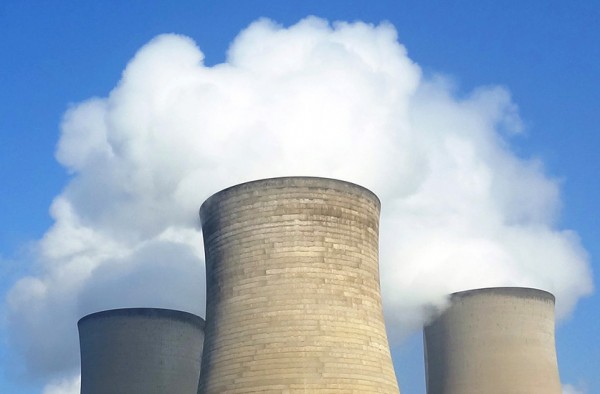 Pricing the environment is a highly controversial issue. Critics claim that the process can easily be manipulated to serve the short-term interests of business and governments. What is more, where tradable permits markets have been set up, such as the EU’s Emissions Trading Scheme (ETS), prices have often been a poor reflection of social costs and have been open to manipulation. As Nick Dearden, director of the World Development Movement (WDM), says:
Pricing the environment is a highly controversial issue. Critics claim that the process can easily be manipulated to serve the short-term interests of business and governments. What is more, where tradable permits markets have been set up, such as the EU’s Emissions Trading Scheme (ETS), prices have often been a poor reflection of social costs and have been open to manipulation. As Nick Dearden, director of the World Development Movement (WDM), says:
It is deeply ironic that the same financial markets that caused the economic crisis are now seen as the solution to our environmental crisis. It’s about time we learnt that financial markets need to be reined in, not expanded. Pricing these common resources on which people depend for their survival leaves all of us more exposed to the forces of the global economy, and decisions about whether or not to protect them become a matter of accounting.
The measurement of natural capital and setting up systems to internalise the costs and benefits of using natural capital is both complex and a political minefield – as the following articles show.
Articles
Putting a value on nature: Edinburgh conference says business is ‘part of the solution’ Blue & Green Tomorrow, Nicky Stubbs (20/11/13)
Edinburgh forum says putting value on nature could save it BBC News, Claire Marshall (20/11/13)
Natural capital must be the way forward, says IUCN director general The Guardian, Tim Smedley (11/11/13)
Is ‘natural capital’ the next generation of corporate social responsibility? The Guardian, Tim Smedley (7/11/13)
Natural capital accounting: what’s all the fuss about? The Guardian, Alan McGill (27/9/13)
Put nature at the heart of economic and social policymaking The Guardian, Aniol Esteban (1/3/13)
Campaigners warn of dangers of ‘privatised nature’ The Scotsman, Ilona Amos (21/11/13)
Edinburgh conference attempts to ‘privatise nature’ World Development Movement, Miriam Ross (18/11/13)
 Valuing Nature BBC Shared Planet, Monty Don (8/7/13)
Valuing Nature BBC Shared Planet, Monty Don (8/7/13)
Sites concerned with natural capital
World Forum on Natural Capital
TEEB for Business Coalition
International Union for Conservation of Nature
Questions
- How would you define natural capital?
- What are ecosystem services?
- Is social efficiency the best criterion for evaluating the use of the environment? What other criteria could you use?
- How would you set about deciding what rate of discount to use when evaluating the depletion of or enhancement of natural capital?
- How can game theory provide insights into the strategies of both businesses and governments towards the environment?
- What are the arguments for and against attempting to value natural capital and to incorporate these values in decision making?
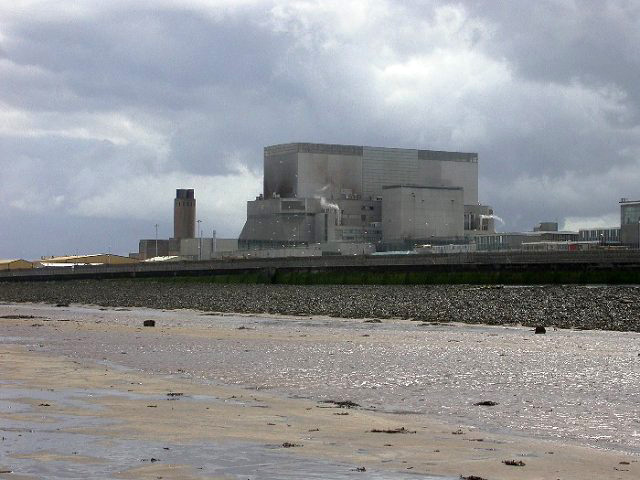 The UK government has just given the go-ahead for the building of two new nuclear reactors at Hinkley Point in Somerset. The contract to build and run the power station will go to EDF, the French energy company.
The UK government has just given the go-ahead for the building of two new nuclear reactors at Hinkley Point in Somerset. The contract to build and run the power station will go to EDF, the French energy company.
The power station is estimated to cost some £14 billion to build. It would produce around 7% of the UK’s electricity. Currently the 16 nuclear reactors in the UK produce around 19%. But all except for Sizewell B in Suffolk are due to close by 2023, although the lives of some could be extended. There is thus a considerable energy gap to fill in the coming years.
Several new nuclear power stations were being considered to help fill this gap, but with rising capital costs, especially following the Fukushima disaster in Japan, potential investors pulled out of other negotiations. Hinkley Point is the only proposal left. It’s not surprising that the government wants it to go ahead.
All that remains to agree is the price that EDF can charge for the electricity generated from the power station. This price, known as the ‘strike price’, is a government-guaranteed price over the long term. EDF is seeking a 40-year deal. Some low carbon power stations, such as nuclear and offshore wind and wave power stations, have high capital costs. The idea of the strike price is to reduce the risks of the investment and make it easier for energy companies to estimate the likely return on capital.
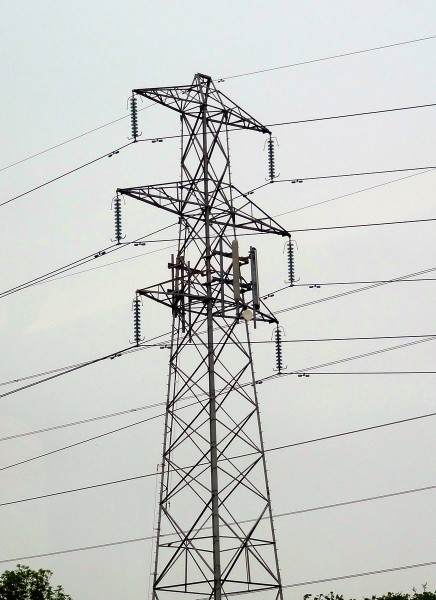 But the strike price, which will probably be agreed at around £95 per megawatt hour (MWh), is roughly double the current wholesale price of electricity. EDF want a price of around £100 per MWh, which is estimated to give a return on capital of around 10%. The government was hoping to agree on a price nearer to £80 per MWh. Either way, this will require a huge future subsidy on the electricity generated from the plant.
But the strike price, which will probably be agreed at around £95 per megawatt hour (MWh), is roughly double the current wholesale price of electricity. EDF want a price of around £100 per MWh, which is estimated to give a return on capital of around 10%. The government was hoping to agree on a price nearer to £80 per MWh. Either way, this will require a huge future subsidy on the electricity generated from the plant.
There are several questions being asked about the deal. Is the strike price worth paying? Are all the costs and benefits properly accounted for, including environmental costs and benefits and safety issues? Being an extremely long-term project, are uncertainties over costs, performance of the plant, future market prices for electricity and the costs of alternative forms of power generation sufficiently accounted for? Will the strike price contravene EU competition law? Is the timescale for construction realistic and what would be the consequences of delays? The articles consider these questions and raise a number of issues in planning very long-term capital projects.
Articles
Hinkley Point: Britain’s second nuclear age given green light as planning permission is approved for first of new generation atomic power stations Independent, Michael McCarthy (19/3/13)
Will they or won’t they? New nuclear hangs in the balance ITV News, Laura Kuenssberg (19/3/13)
Hinkley Point C: deal or no deal for UK nuclear? The Telegraph, Alistair Osborne (19/3/13)
New nuclear power plant at Hinkley Point C is approved BBC News (20/3/13)
Britain’s Plans for New Nuclear Plant Approach a Decisive Point, 4 Years Late New York Times, Stanley Reed and Stephen Castle (15/3/13)
Nuclear power plans threatened by European commission investigation The Guardian (14/3/13)
New Hinkley Point nuclear power plant approved by UK government Wired, Ian Steadman (19/3/13)
Renewable energy providers to help bear cost of new UK nuclear reactors The Guardian, Damian Carrington (27/3/13)
Europe backs Hinkley nuclear plant BBC News (8/10/14)
Information/Reports/Journal Articles
Environmental permitting of Hinkley Point C Environment Agency
NNB Generation Company Limited, Radioactive Substances Regulations, Environmental Permit Application for Hinkley Point C: Chapter 7, Demonstration of Environmental Optimisation EDF
Greenhouse Gas Emission of European Pressurized Reactor (EPR) Nuclear Power Plant Technology: A Life Cycle Approach Journal of Sustainable Energy & Environment 2, J. Kunakemakorn, P. Wongsuchoto, P. Pavasant, N. Laosiripojana (2011)
Questions
- Compare the relative benefits of a construction subsidy and a subsidised high strike price from the perspectives of (a) the government (b) EDF.
- What positive and negative externalities are involved in nuclear power generation?
- What difficulties are there in valuing these externalities?
- What is meant by catastrophic risk? Why is this difficult to take account of in any cost–benefit analysis?
- What is meant by a project’s return on capital? Explain how discounted cash flow techniques are used to estimate this return.
- What should be taken into account in deciding the rate of discount to use?
- How should the extra jobs during construction of the plant and then in the running of the plant be valued when making the decisions about whether to go ahead?
Here’s an interesting example of oligopoly – one you probably haven’t considered before. It’s the art market. And it’s not just one market, but a whole pyramid of markets. At the bottom are the ‘yearning masses’ of penny-poor artists, from students to those struggling to make a living from their art, with studios in their attic, garden shed or kitchen table. At the top of the pyramid are those very few artists that can earn fantastic sums of money by selling to collectors or top galleries. Then there are all the layers of markets in between, where artists can earn everything from a modest to a reasonable income.
The pyramid is itself depicted as a work of art, which you can see in the linked article below. It’s worth studying this piece of art carefully as well as reading the article.
A guide to the market oligopoly system Reuters, Felix Salmon (28/12/10)
Questions
- Identify the increasing barriers to entry as you work up the art market pyramid.
- Are there any other market imperfections in the art market that you can identify from the diagram?
- What are the key differences between the ‘primary market, tier 1’, the ‘primary market, tier 2’ and ‘the secondary market’?
- Are artists ‘rational maximisers’? If so, what is it they are trying to maximise? If not, why not?
- How would you set about determining the ‘worth’ of a piece of art? How do possible future value of a piece of art determine its present value?
 The UK government has finally given the go-ahead to build the new Hinkley C nuclear power station in Somerset. It will consist of two European pressurised reactors, a relatively new technology. No EPR plant has yet been completed, with the one in the most advanced stages of construction at Flamanville in France, having experienced many safety and construction problems. This is currently expected to be more than three times over budget and at least six years behind its original completion date of 2012.
The UK government has finally given the go-ahead to build the new Hinkley C nuclear power station in Somerset. It will consist of two European pressurised reactors, a relatively new technology. No EPR plant has yet been completed, with the one in the most advanced stages of construction at Flamanville in France, having experienced many safety and construction problems. This is currently expected to be more than three times over budget and at least six years behind its original completion date of 2012. security concerns, technological issues and safeguards was conducted. This has now been completed and approval has been granted subject to new conditions. The main one is that the government “will be able to prevent the sale of EDF’s controlling stake prior to the completion of construction”. This will allow the government to prevent change of ownership during the construction phase. Thus, for example, EDF, would not be allowed to sell its share of Hinkley C to CGN, which currently has a one-third share in the project. EDF and CGN have accepted the new terms.
security concerns, technological issues and safeguards was conducted. This has now been completed and approval has been granted subject to new conditions. The main one is that the government “will be able to prevent the sale of EDF’s controlling stake prior to the completion of construction”. This will allow the government to prevent change of ownership during the construction phase. Thus, for example, EDF, would not be allowed to sell its share of Hinkley C to CGN, which currently has a one-third share in the project. EDF and CGN have accepted the new terms. ‘The case hasn’t changed’ for Hinkley Point C BBC Today Programme, Malcolm Grimston (29/7/16)
‘The case hasn’t changed’ for Hinkley Point C BBC Today Programme, Malcolm Grimston (29/7/16)





